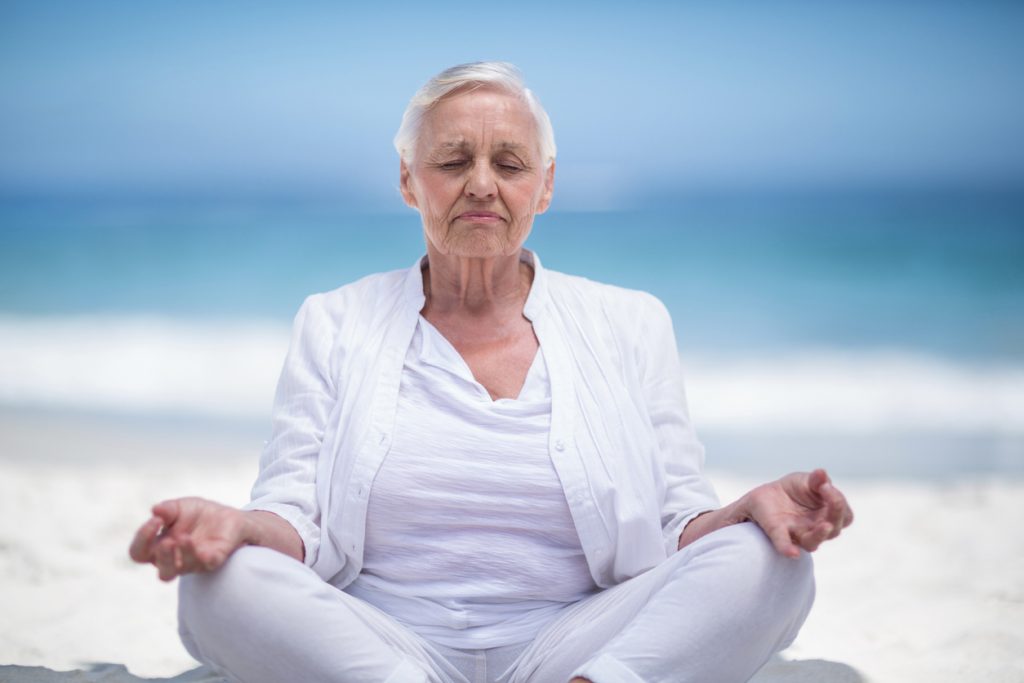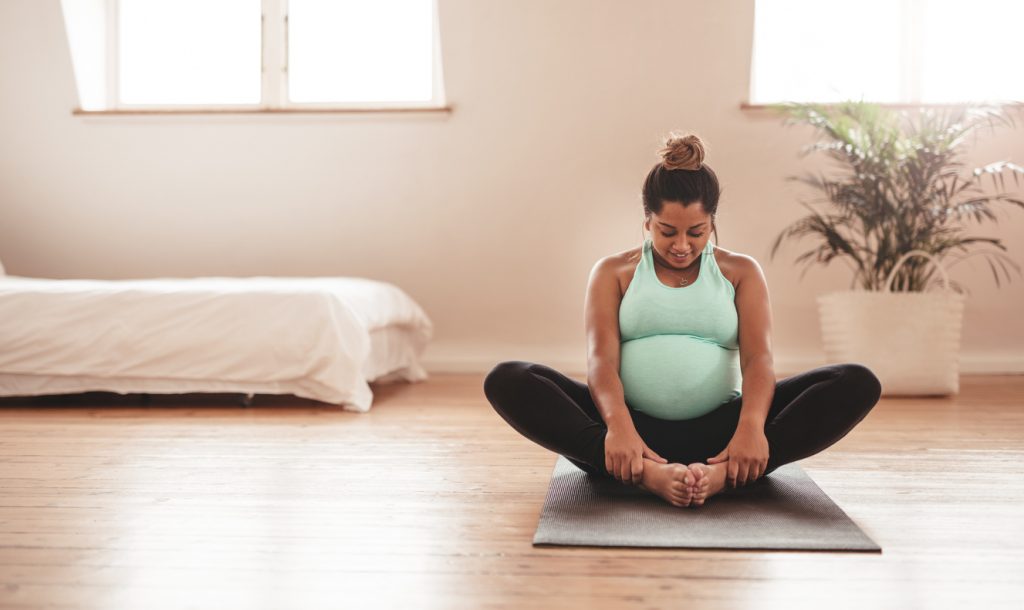
Stress is experienced by everyone; the very nature of our fast-paced lifestyles often triggers stress and anxiety which, understandably, can be challenging to cope with. That said, the use of essential oils is a very effective way to combat the overwhelming effects of stress in a natural way. Aromatherapy has been utilized since ancient times in order to encourage relaxation and tranquility in the midst of stress. There are various ways to use essential oils such as applying them directly to the skin, inhaling them from a bottle, diffusing them in water or adding them to your hygiene products. Essential oils have a variety of purposes such as boosting energy, relieving headaches, helping with focus, improving sleep quality, and decreasing stress.
7 Essential Oils for Stress Relief and Relaxation
Feel free to diffuse the following oils while practicing yoga or meditating in order to increase the relaxing effects of your practice. The essential oils listed below provide a natural remedy for stress and can be used to promote calmness and peace.
1. Jatamansi Oil
This calming and anxiety-relieving oil essential oil will especially benefit those who suffer from overthinking and it also supports deep, high quality sleep. Jatamansi is extracted from the spikenard root and it has a rich history of medicinal use in Ayurvedic medicine. It provides antioxidant and anti-inflammatory effects while also offering stress relieving properties. One way to use Jatamansi oil is by placing a few drops on the crown of your head at night to promote deep, restorative sleep. Otherwise, use it as a massage oil, add it to a bath or even a warm compress if a specific part of your body is tense.
2. Lavender Oil
This oil is the most commonly used essential oil for stress relief due to its relaxing effects on the mind and the body. Lavender oil is also a very effective way to deal with sleep-related problems as it serves as a sleep-aid while enhancing the quality of your sleep. Often used in aromatherapy, lavender oil has been shown to react the same way as anti-anxiety medications. This essential oil can be added to your bath or even added to an aromatherapy diffuser to promote a deep sense of relaxation and stress relief.
3. Chamomile Oil
Chamomile is an essential oil that relieves stress by reducing common symptoms of anxiety, promoting relaxation, reducing inflammation in the body, and regulating your mood. Chamomile extract is often used in tea to combat stress and improve sleep quality. It’s important to keep in mind that chamomile extract can be ingested but chamomile oil cannot. That said, chamomile essential oil can be used by adding it to an aromatherapy diffuser or to your favorite body lotion to help you feel at ease. Aside from its stress-relieving properties, chamomile also relieves pain, helps with anxiety and depression, aids digestion, and improves sleep quality.
4. Ylang-Ylang Oil
This fragrant essential oil derives from the flowers of Cananga Odorata Genuina which is a plant native to India but it can be found in other countries in Asia such as Malaysia, the Philippines, Indonesia, and also Australia. Ylang-ylang provides many benefits for the cardiovascular and immune system as well as lowers blood pressure and helps with depression. Additionally, this essential oil is known to relieve feelings of anxiety and stress due to its calming effects. Use this oil in your bath, diffuser or directly on your skin with a carrier oil such as jojoba oil. Bonus: this floral-scented oil can also be used as a natural perfume!
5. Valerian Oil
Valerian is an earthy essential oil that eases anxiety, stress and restlessness by promoting a sense of peace and tranquility. Its calming abilities might be attributed to its mild sedative effect on the body which also aids with sleep quality. The best way to utilize Valerian is by adding a few drops to an aromatherapy diffuser before bed and allowing its scent to guide you into a deep sleep.
6. Jasmine Oil
This sweet-scented oil has been used for hundreds of years in Asia to naturally treat depression, anxiety, and even sleep problems. Jasmine oil is an essential oil that is extracted from the white flowers of the jasmine plant and it is known for its sweet fragrance. Apart from its beautiful scent, jasmine oil is also used to effectively reduce anxiety and stress, exhaustion and depression. Jasmine oil will also boost your energy levels, improve your mood, and provide an overall sense of relaxation. Try adding this oil to an aromatherapy diffuser, a bath or applying directly to the skin.
7. Bergamot Oil
This cold-pressed essential oil has a sweet, floral scent and it has been used in Ayurvedic medicine for various purposes such as soothing irritated skin, ingested as a health tonic, and used as an antiseptic and analgesic. This essential oil is obtained from the peel of Citrus Bergamia, a fragrant citrus fruit. Bergamot oil can be added to a massage oil or body lotion, it can be added to an aromatherapy diffuser, and it can also applied directly to the skin. That being said, this oil is commonly used to effectively relieve psychological stress and anxiety.
Common occurrences like arguments, traffic, financial struggles, deadlines, and responsibilities can all contribute to stress. Stress is experienced by everyone and when life gets overwhelming, it’s best to resort to a natural remedy for some relief. Aromatherapy is often used as a natural way to relieve feelings of stress without resorting to medication with inevitable side effects. Essential oils provide a sense of relaxation as well as better sleep quality which is needed after a long, stress-inducing day. Some essential oils are better than others at relieving stress such as Jatamansi, Lavender, Ylang-ylang, Jasmine, and others listed above. Be creative and embrace the various ways that these oils can be incorporated in your daily routine in order to keep you feeling calm, tranquil, and serene.




 Apana vayu is the subtle downward movement of energy within the body, and the key to maintaining a pregnancy to full term. Certain therapies, exercises, and herbs may disturb apana vayu. Therefore, the intent of this article is Ayurveda practices insight, rather than a treatment protocol. Due to the complexities of pregnancy, it is wise to leave treatments in the hands of experienced Ayurvedic practitioners.
Apana vayu is the subtle downward movement of energy within the body, and the key to maintaining a pregnancy to full term. Certain therapies, exercises, and herbs may disturb apana vayu. Therefore, the intent of this article is Ayurveda practices insight, rather than a treatment protocol. Due to the complexities of pregnancy, it is wise to leave treatments in the hands of experienced Ayurvedic practitioners. In her Ayurvedic essays, Terra Richardson of Cambridge University explains that a baby is physically conscious of his or her gestational development through the mother’s sense organs. Ancient Ayurveda acknowledges the development of the fetus’s sense organs through ceremonial rites preformed during different stages of pregnancy. According to Richardson, a modern-day pregnant woman can feed her baby’s senses by increasing the quality of her sensory input. She should “see beautiful and loving things, listen to loving and melodious sounds, touch pleasing things, and be touched in loving ways, taste wholesome tastes, and smell fragrant odors.” In other words, by surrounding herself in a beautiful, supportive, and loving environment, a mother’s womb becomes an equally safe, nourishing, and peaceful space for her baby’s consciousness to develop in.
In her Ayurvedic essays, Terra Richardson of Cambridge University explains that a baby is physically conscious of his or her gestational development through the mother’s sense organs. Ancient Ayurveda acknowledges the development of the fetus’s sense organs through ceremonial rites preformed during different stages of pregnancy. According to Richardson, a modern-day pregnant woman can feed her baby’s senses by increasing the quality of her sensory input. She should “see beautiful and loving things, listen to loving and melodious sounds, touch pleasing things, and be touched in loving ways, taste wholesome tastes, and smell fragrant odors.” In other words, by surrounding herself in a beautiful, supportive, and loving environment, a mother’s womb becomes an equally safe, nourishing, and peaceful space for her baby’s consciousness to develop in.
 Outside of renouncing our Western lives for a medical school-length period of time with the masters of yore, how can we both learn Ayurvedic principles and inculcate them within our lives? Take an online quiz to determine our dosha (body constitution)? Self diagnose and treat perceived imbalances with herbs from our local health food store? Invest hundreds, maybe thousands of dollars on Ayurvedic treatments from a certified practitioner, only to find that such remedies are subtle, and require months, if not years of implementation to soothe our ailments?
Outside of renouncing our Western lives for a medical school-length period of time with the masters of yore, how can we both learn Ayurvedic principles and inculcate them within our lives? Take an online quiz to determine our dosha (body constitution)? Self diagnose and treat perceived imbalances with herbs from our local health food store? Invest hundreds, maybe thousands of dollars on Ayurvedic treatments from a certified practitioner, only to find that such remedies are subtle, and require months, if not years of implementation to soothe our ailments? The basis of
The basis of  My daily practice begins with classical Surya Namaskar, which is repetitive cycle of twelve poses that both
My daily practice begins with classical Surya Namaskar, which is repetitive cycle of twelve poses that both  Now, close your eyes. Keeping the whole body engaged, breathe. Take full ujjayi breaths and scan the body once more, beginning at the big toes, and all the way up again, engaging the whole body with awareness and breath. Keeping the body engaged, relax the neck, jaw, face, brow, and scalp. Sense the duality of the engaged, firm, tight, tense, activated body, paired with breath awareness and a purposeful softening of the face. The practice of Tadasana provides an introspective experience aligned with the true purpose of yoga. Physically, the yogi is activated and engaged in the manifest world. Internally, the yogi is calm, focused, and relaxed. In this way, Tadasana embodies the essence of a yogi.
Now, close your eyes. Keeping the whole body engaged, breathe. Take full ujjayi breaths and scan the body once more, beginning at the big toes, and all the way up again, engaging the whole body with awareness and breath. Keeping the body engaged, relax the neck, jaw, face, brow, and scalp. Sense the duality of the engaged, firm, tight, tense, activated body, paired with breath awareness and a purposeful softening of the face. The practice of Tadasana provides an introspective experience aligned with the true purpose of yoga. Physically, the yogi is activated and engaged in the manifest world. Internally, the yogi is calm, focused, and relaxed. In this way, Tadasana embodies the essence of a yogi. Asana, otherwise known as the physical practice of yoga, is only one of eight facets of yoga. Through asana practice, we achieve control of the body by positioning ourselves into different postures that strengthen and tone our muscles and organs. In every pose, we focus on engaging the bandhas, or energy centers in the body. Tapping into
Asana, otherwise known as the physical practice of yoga, is only one of eight facets of yoga. Through asana practice, we achieve control of the body by positioning ourselves into different postures that strengthen and tone our muscles and organs. In every pose, we focus on engaging the bandhas, or energy centers in the body. Tapping into 
 The first of these 7 primary chakras is called Muladhara, or the root chakra. The term ‘mula’ translates to root, and the term ‘adhara’ translates to foundation or base. Therefore, Muladhara is a perfect term for the first chakra. Yoga and Ayurveda, yoga’s ancient sister science, teach us that the root chakra is located at the base of the spine or coccyx. The anatomical location of this energy center includes the first three vertebrae and the pelvic floor or perineum. It’s additionally associated with the organs and structures responsible for elimination, the skeletal structure, and blood.
The first of these 7 primary chakras is called Muladhara, or the root chakra. The term ‘mula’ translates to root, and the term ‘adhara’ translates to foundation or base. Therefore, Muladhara is a perfect term for the first chakra. Yoga and Ayurveda, yoga’s ancient sister science, teach us that the root chakra is located at the base of the spine or coccyx. The anatomical location of this energy center includes the first three vertebrae and the pelvic floor or perineum. It’s additionally associated with the organs and structures responsible for elimination, the skeletal structure, and blood. Sukhasana, Easy Pose: a seated cross-legged position, this pose allows the parts of the body associated with the root chakra to physically touch the ground. This pose is meant to invoke stability and a sense of trust from within
Sukhasana, Easy Pose: a seated cross-legged position, this pose allows the parts of the body associated with the root chakra to physically touch the ground. This pose is meant to invoke stability and a sense of trust from within

